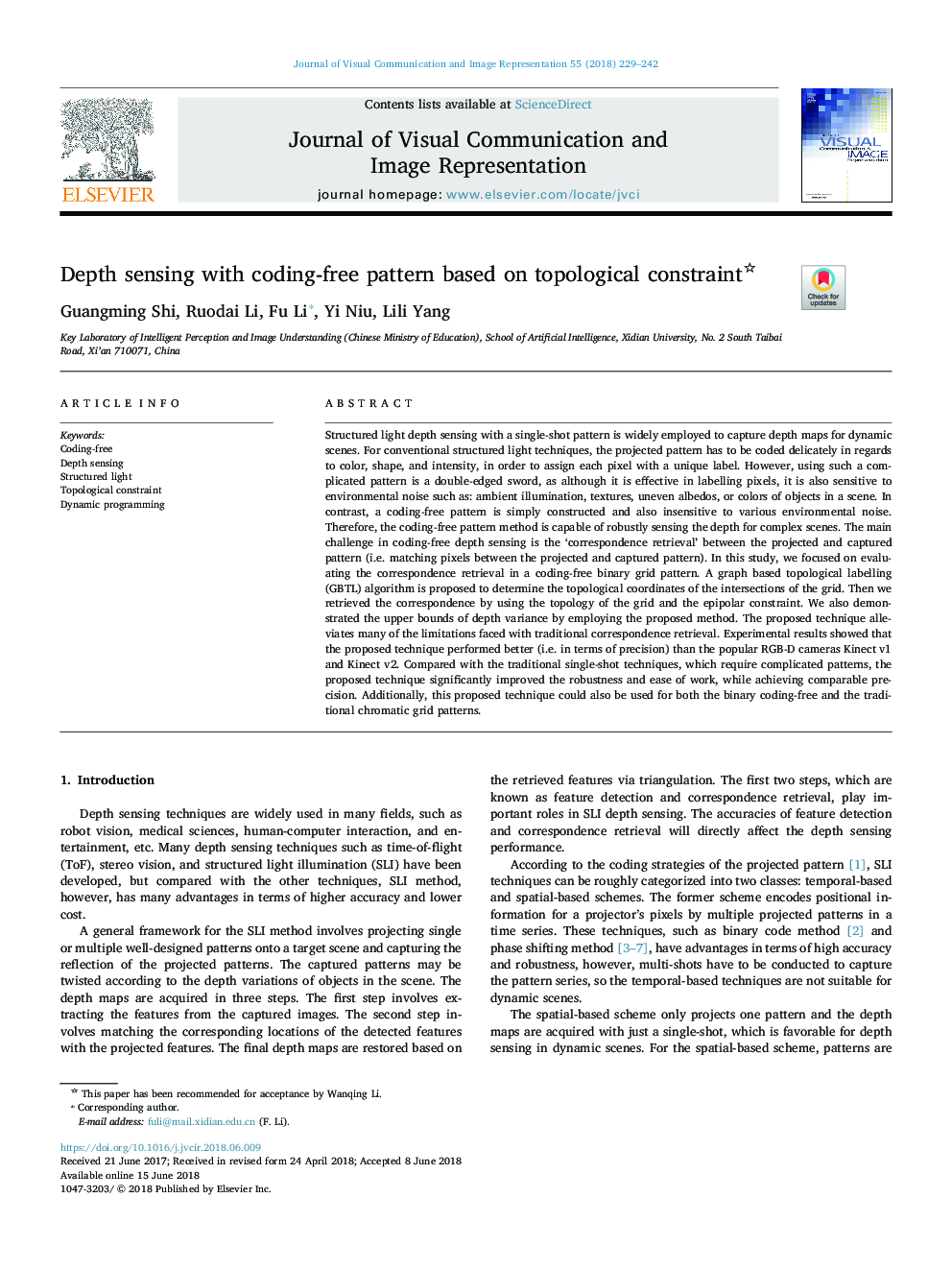| کد مقاله | کد نشریه | سال انتشار | مقاله انگلیسی | نسخه تمام متن |
|---|---|---|---|---|
| 6938090 | 1449921 | 2018 | 14 صفحه PDF | دانلود رایگان |
عنوان انگلیسی مقاله ISI
Depth sensing with coding-free pattern based on topological constraint
ترجمه فارسی عنوان
سنجش عمق با الگوی بدون رمزگذاری بر اساس محدودیت توپولوژی
دانلود مقاله + سفارش ترجمه
دانلود مقاله ISI انگلیسی
رایگان برای ایرانیان
کلمات کلیدی
بدون رمزگذاری عمق سنجش، نور ساختار محدودیت توپولوژیک، برنامه نویسی دینامیک،
موضوعات مرتبط
مهندسی و علوم پایه
مهندسی کامپیوتر
چشم انداز کامپیوتر و تشخیص الگو
چکیده انگلیسی
Structured light depth sensing with a single-shot pattern is widely employed to capture depth maps for dynamic scenes. For conventional structured light techniques, the projected pattern has to be coded delicately in regards to color, shape, and intensity, in order to assign each pixel with a unique label. However, using such a complicated pattern is a double-edged sword, as although it is effective in labelling pixels, it is also sensitive to environmental noise such as: ambient illumination, textures, uneven albedos, or colors of objects in a scene. In contrast, a coding-free pattern is simply constructed and also insensitive to various environmental noise. Therefore, the coding-free pattern method is capable of robustly sensing the depth for complex scenes. The main challenge in coding-free depth sensing is the 'correspondence retrieval' between the projected and captured pattern (i.e. matching pixels between the projected and captured pattern). In this study, we focused on evaluating the correspondence retrieval in a coding-free binary grid pattern. A graph based topological labelling (GBTL) algorithm is proposed to determine the topological coordinates of the intersections of the grid. Then we retrieved the correspondence by using the topology of the grid and the epipolar constraint. We also demonstrated the upper bounds of depth variance by employing the proposed method. The proposed technique alleviates many of the limitations faced with traditional correspondence retrieval. Experimental results showed that the proposed technique performed better (i.e. in terms of precision) than the popular RGB-D cameras Kinect v1 and Kinect v2. Compared with the traditional single-shot techniques, which require complicated patterns, the proposed technique significantly improved the robustness and ease of work, while achieving comparable precision. Additionally, this proposed technique could also be used for both the binary coding-free and the traditional chromatic grid patterns.
ناشر
Database: Elsevier - ScienceDirect (ساینس دایرکت)
Journal: Journal of Visual Communication and Image Representation - Volume 55, August 2018, Pages 229-242
Journal: Journal of Visual Communication and Image Representation - Volume 55, August 2018, Pages 229-242
نویسندگان
Guangming Shi, Ruodai Li, Fu Li, Yi Niu, Lili Yang,
